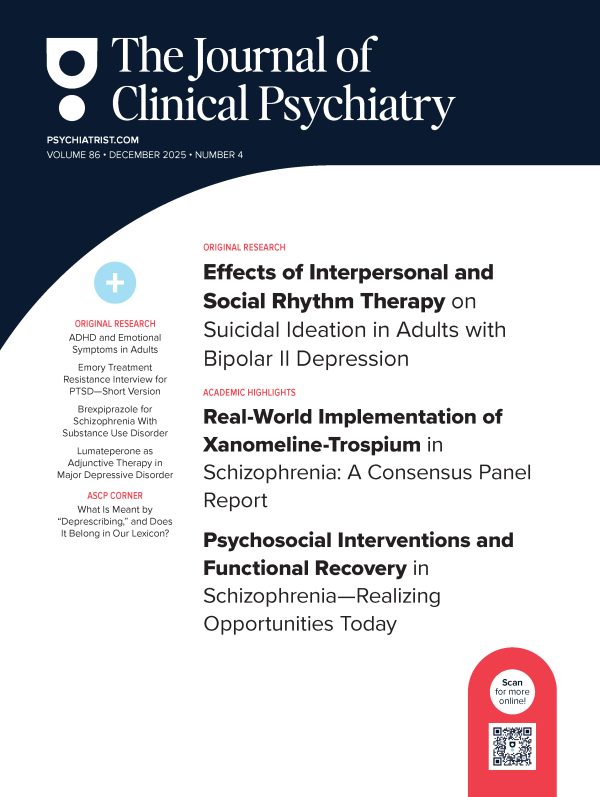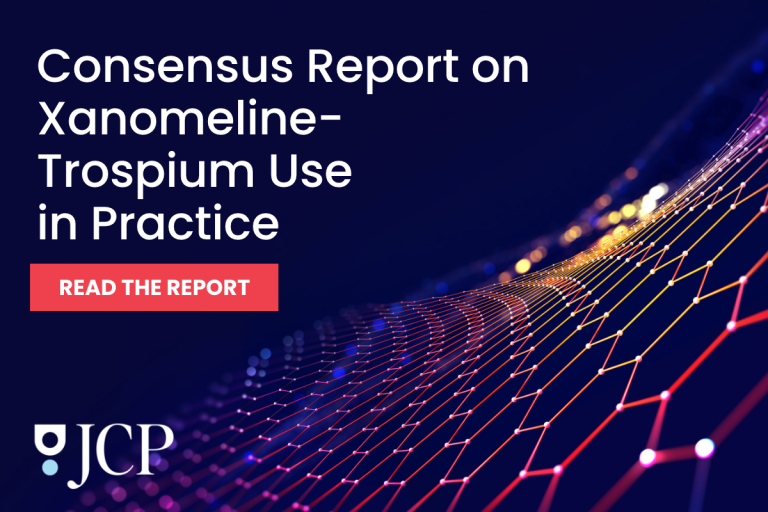See reply by De Martin et al and article by Fava et al
To the Editor: A recent study published in JCP by Fava et al1 shows clinical evidence for a tolerated, long-term antidepressant effect of esmethadone. Esmethadone is one of the two enantiomers of racemic methadone and is chemically named S-methadone, dextromethadone, or D-methadone. The other enantiomer corresponds to R-methadone, also named levomethadone, or L-methadone. With this letter, we want to caution the readership about the misleading description by Fava et al. of S-methadone as a novel N-methyl-D-aspartate receptor (NMDAR) uncompetitive antagonist.1
We recently published a study in rodents demonstrating the in vivo target engagement and agonism of S-methadone at the μ-opioid receptor (MOR) at doses that produce analgesia and antidepressant-like effects in rats.2 Importantly, we also showed that at these doses S-methadone does not interact with NMDARs in vivo.2 Moreover, we provided a significant amount of evidence from in vitro experiments in mammalian transfected cells and in rat brain membrane preparations and slices, indicating that S-methadone has a 10 to 20 times lower potency than R-methadone at the MOR, but that, in agreement with a previous study,3 higher concentrations are necessary to bind to the NMDAR.2
S-methadone is then first a MOR agonist, and the logical question is why it shows very low, if any, abuse liability in animal models and in clinical studies, as reviewed by Fava et al.1 In an earlier study, we provided evidence indicating that complexes, heteromers, of MORs and galanin Gal1 receptors (Gal1Rs) mediate the dopaminergic and euphoric effects of opioids.4 We found that racemic methadone has a significantly weaker potency than other opioids at the MOR-Gal1R heteromer, and, as we predicted, it showed a weaker ability than other opioids at activating the dopaminergic system in rats.4 We therefore also predicted that MOR Gal1R heteromerization should reduce the ability of methadone to produce euphoric effects in humans as compared to the other opioids, which we could confirm with the very low reporting of feeling high in patients with restless legs syndrome treated with methadone as compared with other opioids.4 We could also confirm that patients with opioid use disorder under methadone treatment very rarely describe euphoric effects with methadone and that they very rarely seek methadone to feel high.4
More recently, we demonstrated that S-methadone is responsible for the MOR-Gal1R heteromer-dependent weak dopaminergic effects of methadone. S-methadone binds but specifically loses its efficacy for the MOR that forms heteromers with Gal1R, acting as a competitive antagonist.2 On the other hand, R-methadone is a full agonist at the MOR irrespective of forming or not heteromers with Gal1R. With in silico experiments, we could provide a molecular explanation by which heteromerization specifically changes the pharmacodynamic properties of S-methadone in the MOR-Gal1R heteromer.2 The authors misleadingly say that our study indicates that S-methadone behaves as a MOR antagonist. But this is only true for the MOR-Gal1R heteromer, implying that it can specifically counteract the dopaminergic effects and abuse liability of opioids (including R-methadone in the racemic mixture), but not for the MOR mediating analgesia or depression.
Article Information
Published Online: September 8, 2025. https://doi.org/10.4088/JCP.25lr15973
© 2025 Physicians Postgraduate Press, Inc.
J Clin Psychiatry 2025;86(4):25lr15973
To Cite: Ferré S, Michaelides M. Misleading labeling of S-methadone as a novel N-methyl-D-aspartate receptor antagonist. J Clin Psychiatry 2025;86(4):25lr15973.
Author Affiliations: National Institute on Drug Abuse, Intramural Research Program, Baltimore, Maryland (Ferré, Michaelides).
Corresponding Author: Sergi Ferré, MD, PhD, National Institute on Drug Abuse Intramural Research Program, Ferré and Michaelides 333 Cassell Dr, Baltimore, MD 21224 ([email protected]).
Relevant Financial Relationships: None.
Funding/Support: The authors are supported by the intramural funds of the National Institute on Drug Abuse (grants ZIA DA000493 and grants ZIA DA000069)
References (4)

- Fava M, Pani L, De Martin S, et al. Long-term safety and efficacy of esmethadone in patients with major depressive disorder: findings from a 12-month open label study. J Clin Psychiatry. 2025;86(1):24m15438. PubMed CrossRef
- Levinstein MR, De Oliveira PA, Casajuana-Martin N, et al. Unique pharmacodynamic properties and low abuse liability of the µ-opioid receptor ligand (S)-methadone. Mol Psychiatry. 2023;29:624–632. PubMed CrossRef
- Matsui A, Williams JT. Activation of µ-opioid receptors and block of Kir3 potassium channels and NMDA receptor conductance by L- and D-methadone in rat locus coeruleus. Br J Pharmacol. 2010;161(6):1403–1413. PubMed CrossRef
- Cai NS, Quiroz C, Bonaventura J, et al. Opioid-galanin receptor heteromers mediate the dopaminergic effects of opioids. J Clin Investig. 2019;129(7):2730–2744. PubMed CrossRef
This PDF is free for all visitors!





